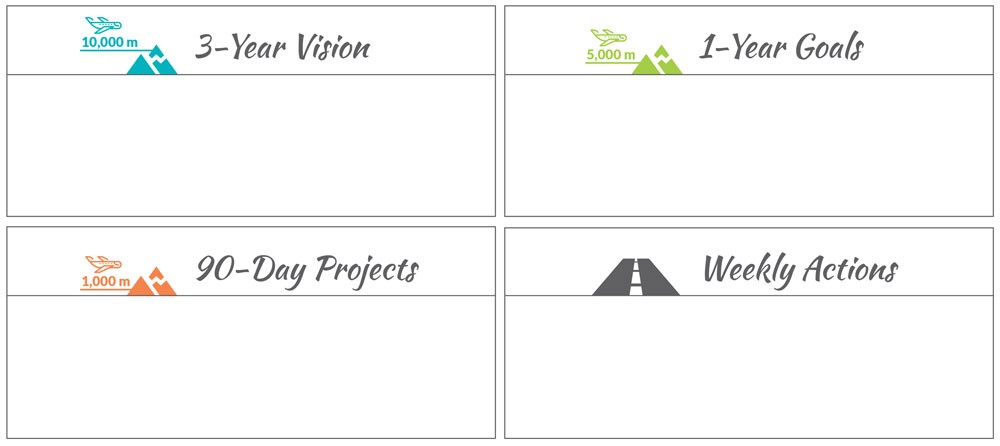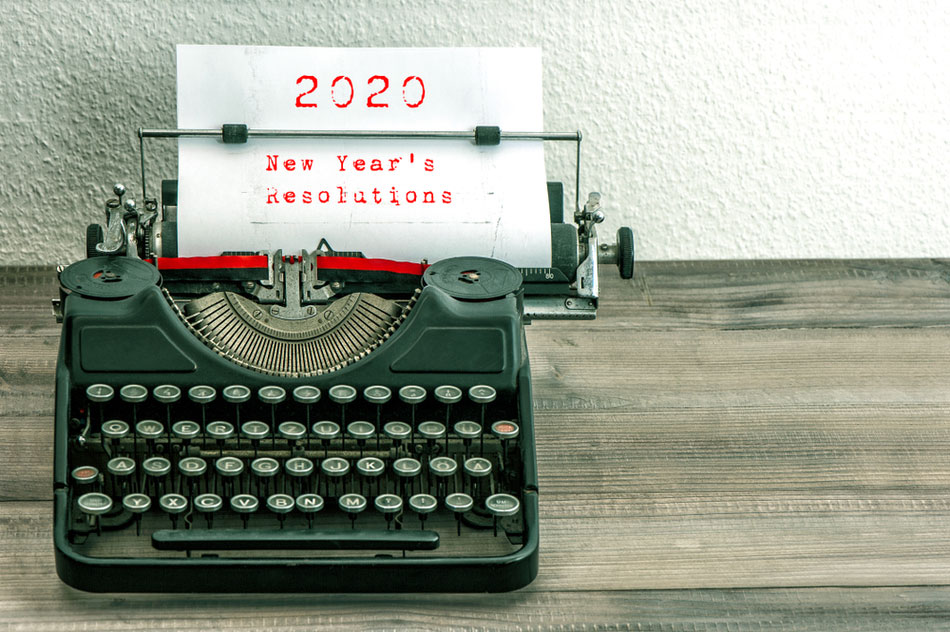With the start of the new year, you’ve probably mapped out your new years’ resolutions. If you’re like most people, you’re excited to set resolutions in January only to find yourself losing motivation within a few weeks. Actually, only half of the people who make new year’s resolutions stick with them past February. If this happens to you as well, why not try a new approach?
Instead of setting resolutions around December 31, use my long-term perspective framework to plan your goals and ensure you’re on the right track at any point during the year. The framework is based on a 3-year vision, 1-year goals, 90-day projects, and weekly actions.
This method works for any goal, whether related to your health, career, finances (the state of which actually play a role in your health), or any other goals.
The steps:
3-Year Vision (10,000 m)
Imagine you’re in a plane, flying up at 10,000 meters where you can see everything clearly, all around for kilometers. Where do you see yourself in 3 years’ time? Write your vision in this section.
1-Year Goals (5,000 m)
Now bring it down to 5,000 meters. You’ve established a 3-year vision, so the next step is to plan to land the plane. Write down where you need to be on your 1-year mark to be on track for the 3-year vision. Look at everything you wrote under the vision section and write down your related 1-year goals. Make each one very tactical and measurable.
90-Day Projects (1,000 m)
Now take the plane down to 1,000 meters. Your new time frame is 90 days. The question is: if that’s where you want to be in 12 months, what are the 3 projects you need to accomplish in the next 90 days to be completely on track? What 3 projects are going to move you closer to your 1-year goals? Write down your 3 projects using clear and action-oriented language. “Stop sugar” would be an example of a project related to a “eat healthy” 1-year goal as part of an “achieve and maintain optimum wellness” 3-year vision.
1 Week Actions (on the runway)
Now you’re about to reach the runway. Your new timeframe Is 1 week. One week to take the specific actions needed to move your projects forward. What 3 actions do you need to take this week to move you forward? Write down your 3 actions (again, using clear and action-oriented language), copy them to a post-it notes and stick it somewhere where you will see it regularly. Make one of the actions really easy to achieve and get you moving forward.
When you complete your 3 actions each week, you’re on track with your 90-day projects. If you complete your 90-day projects, you’ll be on track with your 1-year goals. If you hit your 1-year goals, you’ll be on track for your 3-year vision. Focus on your actions for this week, and the rest takes care of itself. Each Monday morning stick a new post-it notes with the week’s actions over last week’s note.

Without this framework, your brain will try to focus on an endless number of things without any organization or priority, everything is scrambled together, everything continually competes for your attention, and everything is urgent.
Another way to plan and achieve your goals efficiently, is to divide the 90 days into 3 types: free days for rejuvenation, buffer days for preparation, and focus days for productivity.
Consider breaking down your energy into 3 states to achieve your 90-day goals:
Free days
Allow 2 free days per week to enjoy the things you love doing, whether alone or with a loved one. Free days rejuvenate you and enable you to be alert and creative on focus days.
Buffer days
Reserve 2 buffer days per week to clear the clutter in your head, think, prepare, rehearse, and delegate.
Focus days
Book 3 focus days per week, these are the top-notch performance days where you will just be in the moment, fully engaged, focused, and giving it your best.
Success and excellence are never accidents or strokes of luck. They come as the result of a well-implemented plan. There’s only one kind of success – to be able to spend your life in the way you want, in good health. I invite you to visualize what you want to achieve and plan it using the long-term framework perspective.

